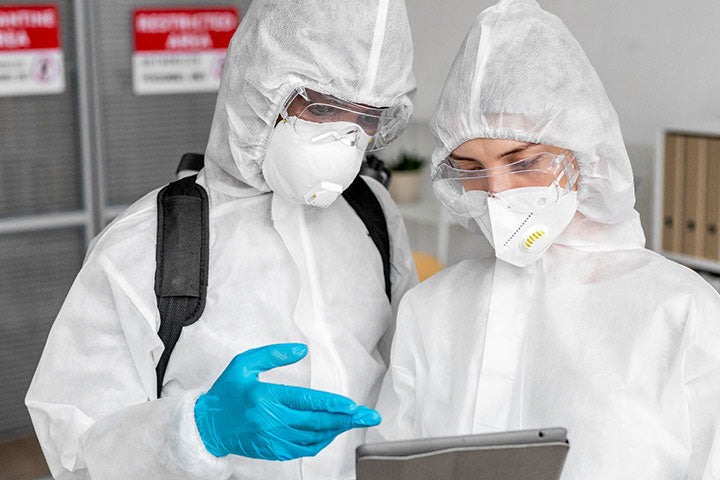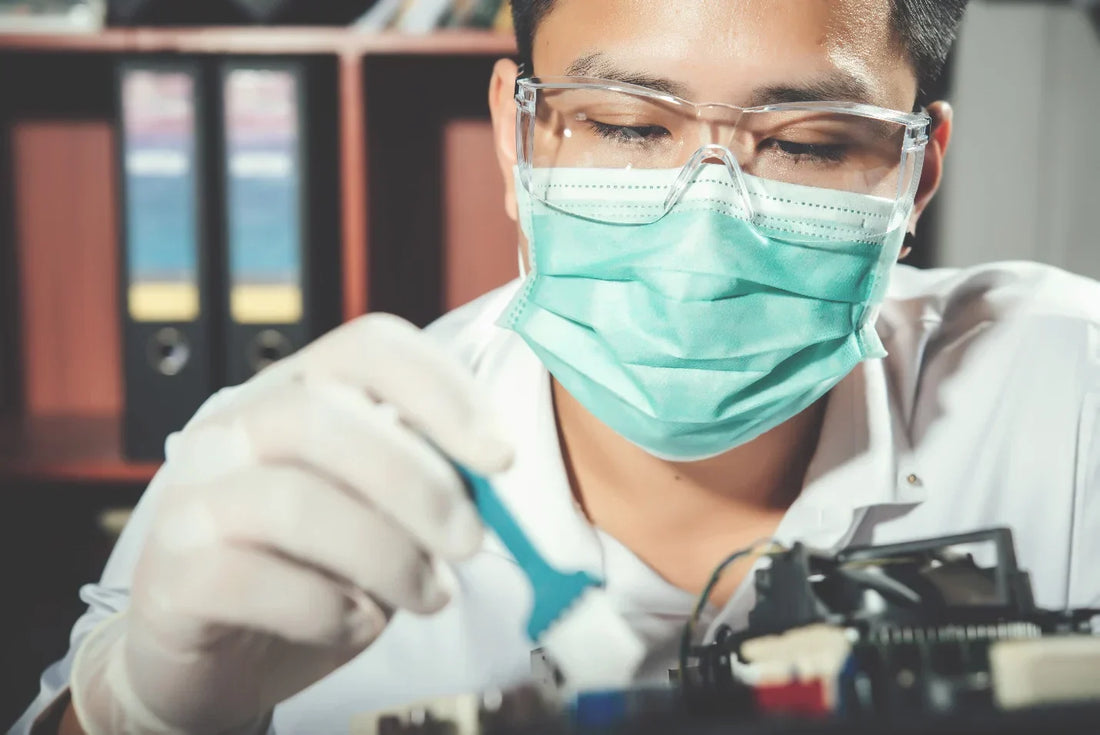Everything You Need to Know About Biosafety Hood Certification for Your Lab
Summary:
Biosafety hood certifications are essential safety requirements for all laboratories. This guide explores the importance, benefits, types, and processes of gaining the certification.
Introduction
A certified biosafety hood is critical to a safe and functional lab. These enclosures provide a sterile environment for handling hazardous biological agents, protecting laboratory personnel and the surrounding environment.
However, it is critical to ensure that your biosafety hood meets the necessary safety standards. The steps to obtaining a biosafety hood certification are complicated.
This article delves into biosafety cabinets, discussing the significance of certification, the various types of certifications available, the certification process, measures for maintaining certification, their benefits, and how to select the correct body for certification.
Let’s begin.
What is a Biosafety Hood?

The Biological Safety Cabinet (BSC) is the primary containment device that protects laboratory personnel, samples, and the environment from biological hazards.
Biosafety cabinets are only used for certain risk group organisms and processes that might result in aerosol formation. They are equipped with HEPA filters that decontaminate the air moving out of the cabinet. The U.S. Centers for Disease Control and Prevention (CDC) classifies the cabinets into three classes.
-
Class I biosafety cabinet is designed solely for operator protection. Its applications are limited as it does nothing to protect the sample.
-
Class II biosafety cabinets protect the operator and the sample, making them ideal for microbiological work.
-
Class III biosafety cabinets are characterized by total containment. They maintain negative pressure with ventilation through double HEPA filters. They also feature attached rubber gloves for handling items in the box and protecting sample integrity.
Importance of Biosafety Hood Certification
1. Protection of personnel
Biosafety hoods prevent exposure to biohazardous materials. Certification ensures the hood functions correctly, protecting laboratory personnel from potential health risks and contamination.
2. Protection of the environment
A certified biosafety hood prevents the release of biohazardous materials into the environment, reducing the risk of contamination and public exposure.
3. Compliance with regulations
Regulating agencies, such as the Centers for Disease Control and Prevention (CDC) and the National Institutes of Health (NIH), require biosafety hood certification. Laboratories without this certification may face potential legal and regulatory sanctions.
4. Accreditation and certification
Biosafety certification is necessary for laboratories to maintain accreditation and certification from organizations such as the College of American Pathologists (CAP) and the American Association of Blood Banks (AABB).
5. Quality control
Regular certification ensures that the equipment functions properly. It also aids in detecting any difficulties or malfunctions, ensuring the biosafety hood is adequately maintained and repaired.
Types of Biosafety Certifications
1. ANSI/ASHRAE 110-2016 Certification
This certification covers testing performance methods for safe laboratory operations. The American Society of Heating, Refrigerating, and Air Conditioning Engineers administers it.
2. EN 12469 Certification
This certification is a European standard that establishes performance requirements for biosafety cabinets regarding microbiological safety and user protection.
3. NSF Biosafety Cabinet Certification
NSF certification addresses health and safety concerns associated with working with potential pathogens. Priority is given to enhancing laboratory safety, especially that of users.
The Certification Process
1. Pre-Certification Inspection
A qualified technician inspects the biosafety hood to ensure it is installed, maintained, and functioning correctly.
2. Testing and Evaluation

The technician conducts several tests to assess the biosafety hood's performance, including:
-
Inflow velocity measurements: This test ensures that proper inflow is maintained to protect the operator and the environment.
-
Downflow velocity measurements: This test verifies that the air in the work area is unidirectional and functioning correctly, preventing cross-contamination and protecting the products.
-
HEPA filter integrity testing: This test looks for leaks or faults in the equipment, ensuring that HEPA filters offer the necessary filtration to prevent product and environmental harm.
-
Smoke pattern testing: This test uses little visible fog to verify airflow directions.
-
Site installation testing and alarm calibration: This test checks alarm performance and evaluates installation to verify it meets NSF and OSHA standards.
3. Certification Standards
The technician checks that the biosafety hood satisfies the appropriate certification criteria, such as NSF/ANSI 49, ASHRAE 110, or EN 12469.
4. Documentation and Reporting
The technician records the test results, including any deviations or shortcomings, and prepares a complete report.
5. Certification Labelling
If the biosafety hood passes the certification requirements, the technician adds a certification label that includes the date of certification and the certifying body.
6. Recertification
Biosafety hoods must be recertified every 6-12 months to guarantee they continue to meet regulatory requirements.
Maintaining Certification
1. Regular Maintenance
To keep your equipment certification, you should perform routine maintenance tasks such as cleaning, replacing filters, and checking for proper function.
2. Scheduled Recertification
Recertify your equipment every 6-12 months to ensure ongoing compliance with certification standards.
3. Repair and Replacement
To maintain the equipment’s safety and performance, promptly address any issues or malfunctions and replace worn or damaged parts.
4. Training and Competence
Ensure that personnel using the biosafety hood are adequately trained and competent in its use, maintenance, and safety procedures.
5. Documentation and Record-Keeping
Maintain accurate and detailed records of maintenance, repair, and recertification activities as well as training and competence documentation.
Benefits of Certified Biosafety Hoods

1. Enhanced Safety
Biosafety cabinet certification protects laboratory personnel from exposure to biohazardous products.
2. Compliance with Regulations
Certification ensures compliance with relevant regulations, such as OSHA, CDC, and NIH guidelines, reducing the risk of legal and associated penalties.
3. Improved Containment
Biosafety hood certification efficiently contains biohazardous materials, preventing harmful substances from entering the environment.
4. Extended Equipment Lifespan
Regular maintenance related to the certification and recertification processes can extend the life of biosafety hoods and other equipment. It also increases efficiency and lowers the cost of replacement services.
5. Enhanced Credibility
Biosafety certification demonstrates a commitment to safety, quality research, and compliance, which enhances the organization's credibility and reputation.
Choosing the Right Certification Body
Choosing the correct certification organization for your equipment is critical to ensuring that your laboratory satisfies all necessary safety standards and laws. Here's how to select the appropriate certification body:
1. Accreditation
Ensure that the certifying body is accredited by a recognized organization, such as the American Association for Laboratory Accreditation (A2LA) or the International Accreditation Forum.
2. Expertise
Choose a certification authority with extensive experience in biosafety hood certification and a thorough understanding of relevant legislation and standards.
3. Recognition
Ensure the certification body is recognized by relevant regulatory agencies, such as the Centers for Disease Control and Prevention (CDC) or the National Institutes of Health (NIH).
Conclusion
If you own or manage a laboratory, a biosafety hood certification is essential to personnel and environment safety. Apart from helping to ensure the integrity of your experiments, samples, and results, it also ensures that personnel will be safe from biological hazards. Contact R&D Laboratories for help with equipment certification, maintenance, and training.
FAQs
1. What is a biosafety hood?
A biosafety hood is a primary containment device used in laboratories to store hazardous materials and samples and protect personnel and the environment.
What is biosafety certification?
Biosafety certification is a process through which your biosafety equipment is tested to ensure it functions correctly and that personnel are trained in its usage.
3. What are the rules for biosafety cabinets?
Before use, ensure that all equipment is certified and personnel are adequately trained.
4. How does a biosafety hood work?
Biosafety cabinets are enclosures with inward airflow through the front opening. Exhaust air is passed through the HEPA filter, protecting personnel and the environment.
5. What are the benefits of biosafety hood certification?
Having your equipment certified ensures an increased lifespan, enhanced safety in the lab, and result and sample integrity. It also gives your organization more credibility.






